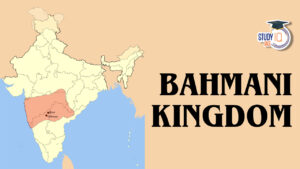Table of Contents
The Civil Disobedience Movement (1930-1934) was a defining phase of India’s struggle for independence, spearheaded by Mahatma Gandhi. It began with the historic Dandi March, also known as the Salt March, and employed nonviolent resistance to challenge British colonial rule. The movement’s central demand was Purna Swaraj (complete independence), as declared by the Indian National Congress (INC) in 1929.
Civil Disobedience Movement (CDM)
The Civil Disobedience Movement, led by Mahatma Gandhi from 1930 to 1934, was a pivotal part of India’s struggle for independence. It began with the Dandi March, where Gandhi protested the British salt tax by making salt illegally. The movement involved mass protests, boycotts of British goods, and nonviolent resistance against colonial rule. Though it didn’t immediately achieve independence, it united Indians, weakened British authority, and laid the foundation for future freedom efforts through nonviolent methods.
| Details | |
|---|---|
| Period | 1930-1934 |
| Leader | Mahatma Gandhi |
| Objective | Protest against British salt monopoly and taxes; demand for complete independence |
| Key Event | Dandi March (Salt March) was initiated by Gandhi on March 12, 1930 |
| Method of Protest | Civil Disobedience, Non-violent Resistance |
| Salt Satyagraha | Symbolic production and selling of salt without paying taxes, breaking the salt laws |
| Boycott of British Goods | Indians boycotted British goods and institutions |
| Non-Cooperation | Refusal to cooperate with British authorities; surrendering titles and honors |
| Women’s Participation | Significant involvement of women in protests and marches |
| Repression | British response included arrests, imprisonments, and use of force |
| Outcome | Increased political awareness, international attention, and negotiations with the British |
| End of Movement | Officially called off by Gandhi in 1934 |
Features of Civil Disobedience Movement
Civil Disobedience is a strategy of peaceful protest against unjust laws or policies. Introduced by Henry David Thoreau and popularized by Gandhi, it involves:
- Non-violent resistance
- Deliberate law-breaking to challenge authorities
- Acceptance of legal consequences
- Moral appeal to the public and authorities
This approach aims to disrupt the status quo and highlight the injustice of oppressive systems, inspiring broader participation and challenging unjust laws.
Causes of Civil Disobedience Movement
- Simon Commission (1927): Excluded Indian representation; which led to widespread protests.
- Demand for Dominion Status: The rejection of this demand made Congress push for Purna Swaraj.
- Lahore Session (1929): INC under Jawaharlal Nehru declared Complete Independence as the goal, authorizing civil disobedience.
- Salt Tax: Gandhi chose salt as a symbol, as it was a daily necessity affecting the rich and poor.
Civil Disobedience Movement and Viceroy Irwin
Viceroy Irwin received a letter from Mahatma Gandhi on January 31, 1930, in which he outlined and imposed eleven demands. The most compelling of all the requests was to get rid of the salt tax, paid for by both the rich and the poor. By March 11th, the demands had to be satisfied, or Congress would start a civil disobedience campaign. 78 of his dependable volunteers marched with Mahatma Gandhi in the well-known salt march.
The march traveled more than 240 kilometers from Gandhiji’s ashram in Sabarmati to the coastal town of Dandi in Gujarat. He landed in Dandi on April 6 and ceremonially breached the law by salting seawater by scalding it. This movement catalyzed the Civil Disobedience Movement.
Impact of Civil Disobedience Movement
The CDM had significant impacts on India’s freedom struggle:
- Mass Mobilization: Brought together Indians across classes, castes, and religions, increasing unity.
- International Attention: Raised awareness globally about British exploitation and Indian demands.
- Weakening British Authority: Non-cooperation led to a decline in British revenue and control.
- Non-violent Resistance: Popularized Gandhi’s methods of peaceful protest on a large scale.
- Foundation for Independence: Though the movement did not achieve immediate independence, it laid the groundwork for future campaigns.
British Government’s Response on Civil Disobedience Movement
- Round Table Conferences (1930-1932): The British convened these meetings to discuss constitutional reforms, but Congress boycotted the first conference.
- Gandhi-Irwin Pact (1931):
- British Concessions: Released non-violent political prisoners
- Congress Agreement: Ended the civil disobedience movement temporarily.
- Second Round Table Conference: Congress agreed to participate, with Gandhi as the representative.
Why did Gandhiji choose Salt as a Weapon?
- Essential Commodity: Salt was a basic necessity for all Indians, making it a powerful symbol.
- Tax Burden: Salt taxes affected both the rich and the poor, making it a unifying issue.
- Connection with Swaraj: By breaking the salt laws, Gandhi connected the fight for independence with a common grievance.
Also read: Dandi March
Limitations of Civil Disobedience Movement
Despite its significant impact on India’s struggle for independence, the Civil Disobedience Movement had certain limitations:
- Limited Participation: The movement mostly involved urban middle-class people, with fewer peasants or marginalized communities.
- Communal Divisions: Muslim participation was limited, and communal tensions increased due to separate demands.
- Untouchables’ Exclusion: Gandhi’s focus on other issues meant the concerns of Dalits (untouchables) were sidelined.
- Dependence on Gandhi: The movement’s success was closely tied to Gandhi’s leadership, weakening when he was arrested or absent.
Conclusion
The Civil Disobedience Movement was a defining moment in India’s freedom struggle. Though it did not achieve immediate independence, it advanced the cause by mobilizing the masses, weakening British control, and bringing international attention to India’s plight. The non-violent civil disobedience approach became a cornerstone of future movements and ultimately played a critical role in India’s eventual independence in 1947.


 Bahmani Kingdom (1347-1527 AD), History,...
Bahmani Kingdom (1347-1527 AD), History,...
 Indus River System, Tributaries, and Sin...
Indus River System, Tributaries, and Sin...
 Jallianwala Bagh Massacre, Date, History...
Jallianwala Bagh Massacre, Date, History...





















